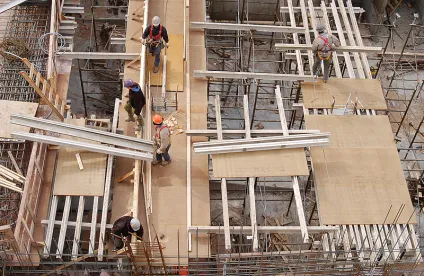Fewer words in the context of land use planning come with as negative a connotation as “sprawl.” There’s a good reason for this, as the term denotes a move outwards from the heart of a city, pushing communities further apart into low density suburbs while the core of the area falls into decay. Sprawl has been cited as the cause for everything from environmental damage to community segregation, with inherently negative consequences for cities that fail to plan for sustainable growth. To combat sprawl, however, communities have turned to creative and innovative revitalization efforts such as infill and adaptive reuse as a way to slow the outward push and revitalize existing residential, commercial and even industrial spaces.
Infill is the process of identifying sites within existing and developed areas that are either vacant, or can be cleared and redeveloped with new projects. The benefits of an infill project to a community can be substantial: it reduces vacant or blighted land, typically utilizes already existing community infrastructure like roads and sewers, and can reinvigorate growth in stagnant or declining areas. Because of this, many communities encourage infill development by streamlining the process to obtain the approvals necessary to start building, reducing application fees, or providing tax incentives to developers.
Likewise, adaptive reuse projects have also become very popular. Adaptive reuse, in a nutshell, involves recycling an existing building to use it for a purpose other than for which it was built. Vacated warehouses and industrial spaces can find new life as entertainment complexes and craft distilleries and breweries, for example. This highly innovative form of development preserves existing structures and minimizes the new resources required for construction. Adaptive reuse can be highly valuable in areas where historic preservation and community character are paramount, allowing the character of the buildings to guide development, rather than merely the location of the property. Neighbors may be more accepting of adaptive reuse (as opposed to infill or new development) because it preserves the look and feel of their current neighborhood while encouraging growth and reducing vacant and deteriorating structures.
While infill and adaptive reuse can offer exciting and unique opportunities, developers should be conscious of the risks and costs potentially associated with these strategies. Though infill does allow existing infrastructure to be utilized, there needs to be a determination whether this infrastructure can handle uses likely never contemplated when it was installed. Similarly, before starting an adaptive reuse project, developers need to truly evaluate the costs and benefits of such a project. Renovation and rehabilitation costs may exceed the expense of new building, or environmental contamination may prove too high a barrier. Buildings designed without regard for energy conservation may pose a problem for energy-conscious developers as well.
It is also crucial for communities to develop responsible infill and adaptive reuse policies. Unregulated infill policies can alter the character of neighborhoods, can see historic structures destroyed or inexorably altered, and may even displace residents. A neighborhood may delighted to hear that a vacant, unkempt parcel is going to be developed, only to later decry the used car lot built on the property that floods their homes with lights used to highlight the inventory at night. Adaptive reuse can also pose problems, as reused facilities may incorporate uses never envisioned when the property was originally developed. These new uses may negatively impact traffic and parking, and may require communities to upgrade infrastructure sooner than planned.
Infill and adaptive reuse are valuable tools for both developers and communities – but as with any tool, these may not always be the correct choices for the job at hand. Both methods can strengthen the core of a city while preventing sprawl, but the costs and benefits to both communities and developers must be evaluated before undertaking such a project. Responsible policies should be adopted by cities in accord with their comprehensive vision for the community. Developers may find that community inducements make infill development attractive, but should consider whether the benefits offered outweigh the costs associated, and whether these types of development are right for their project.



 />i
/>i
